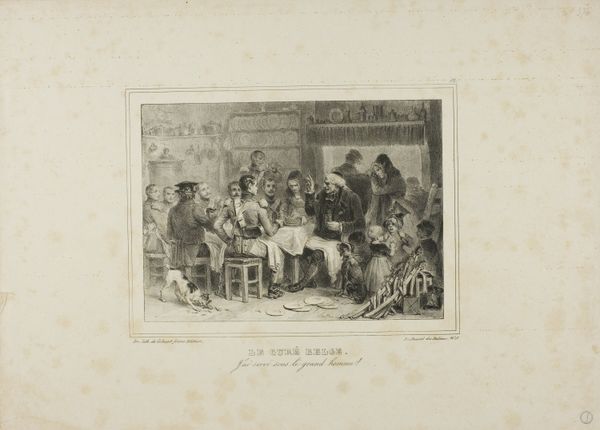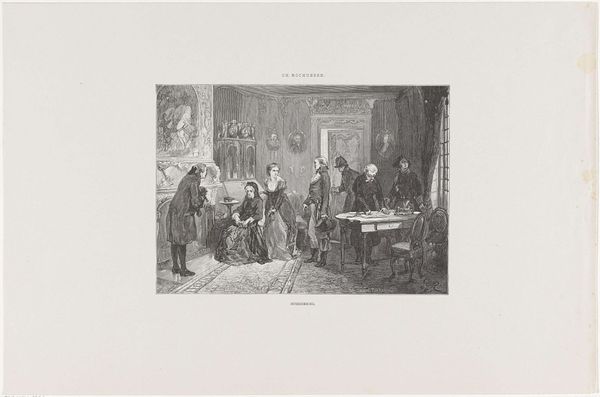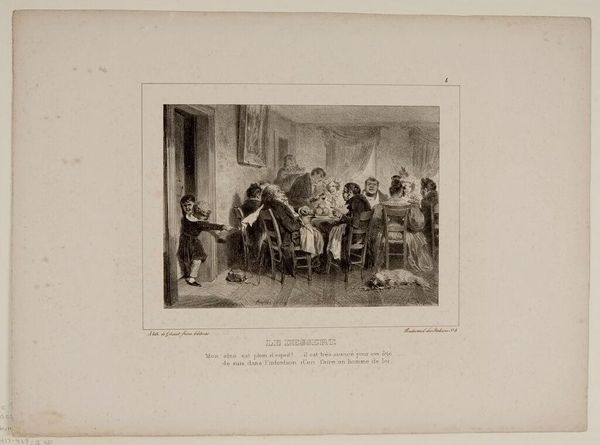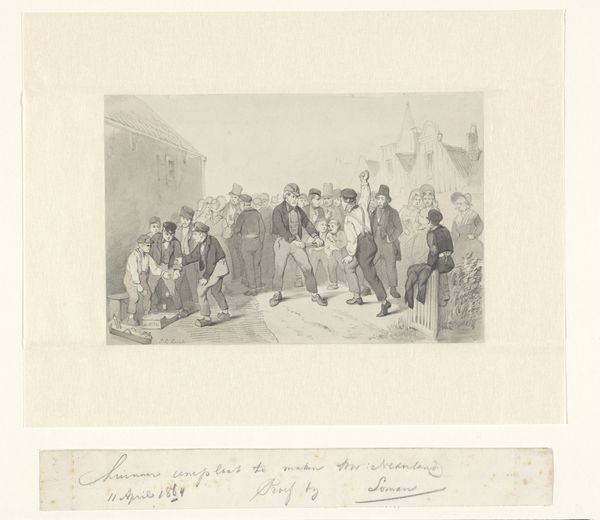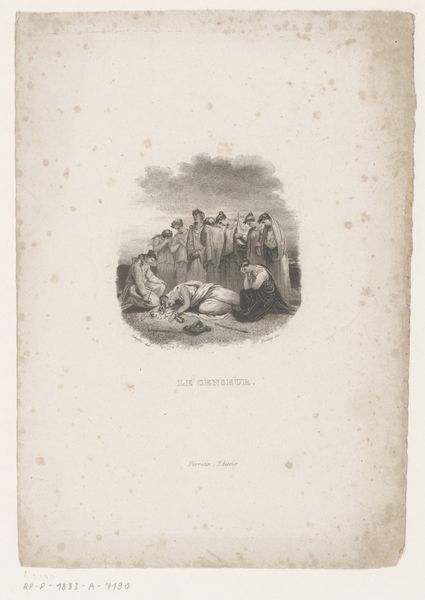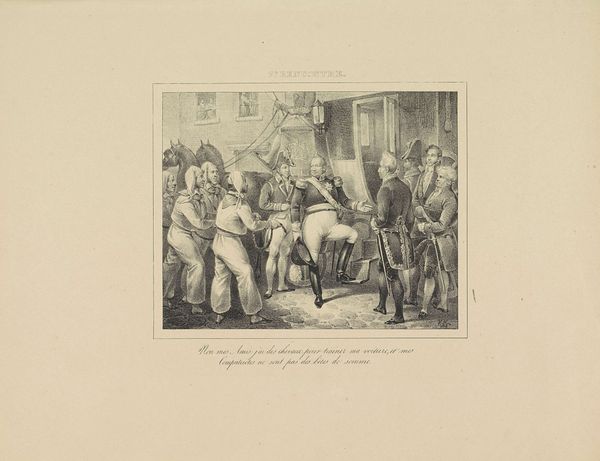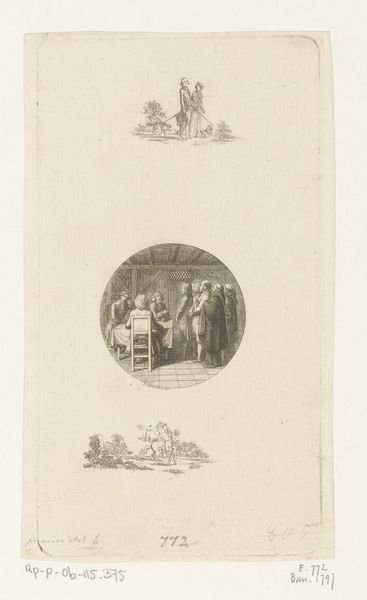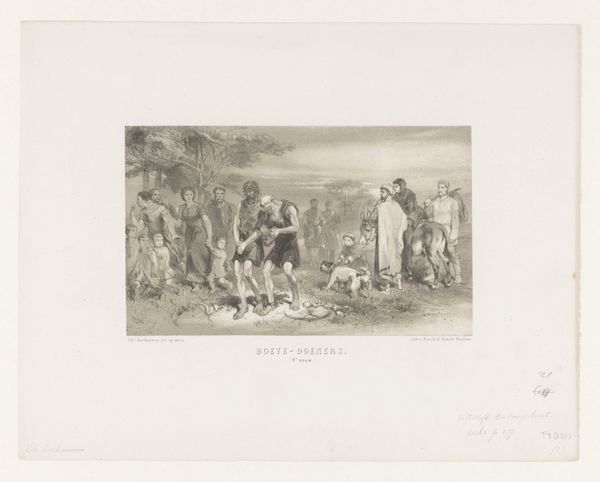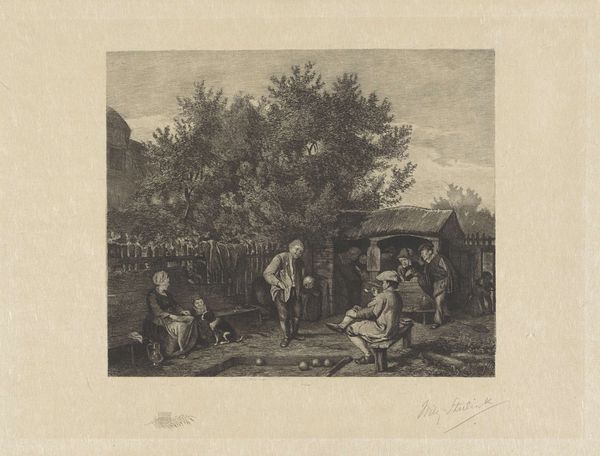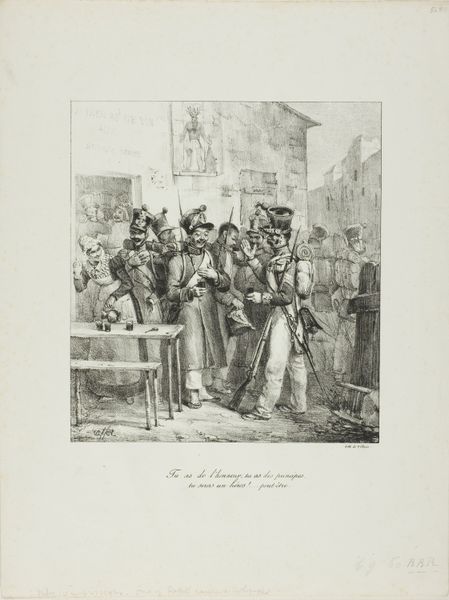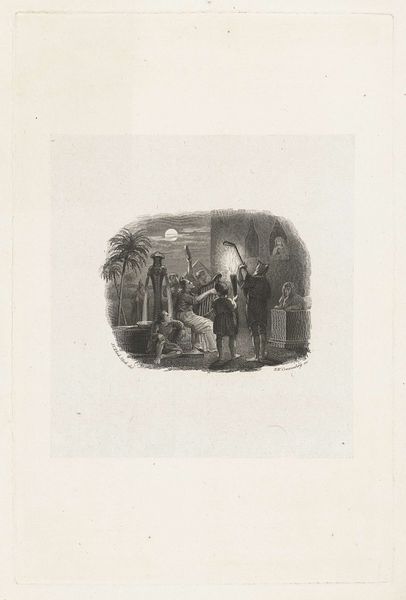
print, engraving
#
portrait
# print
#
old engraving style
#
genre-painting
#
history-painting
#
engraving
#
realism
Dimensions: height 209 mm, width 253 mm
Copyright: Rijks Museum: Open Domain
Curator: What we have here is an engraving by Johannes de Mare, dating from 1816 to 1846. Its title, "Napoleon besluit tot de doorbraak van het Canal de Saint-Quentin," captures a moment of decisive action. Editor: My immediate reaction is one of contrasting energies. You've got Napoleon and his entourage, all erect and formal, juxtaposed with the exhausted labourer in the lower left. It speaks to the sheer weight of ambition, doesn't it? Curator: Precisely. De Mare masterfully uses the formal composition to emphasize Napoleon's central role. Note the receding lines drawing the viewer's gaze toward him and the stark contrast of light and shadow delineating forms. Editor: The printmaking feels almost photographic in its precision—like capturing a theatrical moment on location. That slumped figure adds a note of realism to the grand historical narrative, which tickles me in a dark way. Curator: Yes, the tension is palpable. The composition stages a semiotic encounter, highlighting Napoleon as the signifier of progress against the material conditions, signified by the labourer. The Canal itself stands for both power and progress. Editor: A bit on the nose perhaps, if you want my two cents? Though I suppose subtlety isn't really what this work aimed for. Still, there is something very magnetic in its overt play with themes of power and the human cost that history loves to obscure with a wash of "progress." Curator: Perhaps. Yet consider that the very graphic style chosen helps flatten the subtleties of this complex time. The linear quality invites us to dissect these socio-political narratives inherent in the depicted landscape. Editor: Point taken. This almost propagandistic feel makes it irresistibly strange to a modern eye—all pomp and circumstance viewed through the lens of exploitation. Well, I’m hooked and somewhat repelled; compelling, isn't it? Curator: Indeed. This image provides valuable insight into the intersection of ambition, engineering, and the human condition during Napoleon’s reign. Editor: An uncomfortable, brilliant little peek into history, etched in monochrome glory. It makes one wonder what's written beneath all the smiles on monuments nowadays.
Comments
No comments
Be the first to comment and join the conversation on the ultimate creative platform.
